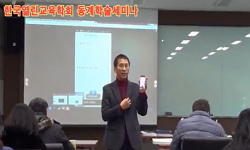이 논문은 1840∼1910년 江原道 平海郡 狗巖洞 ‘洞中’의 운영 양상을 규명한 것이다. 조선후기 이후 각 촌락은 부세 대응, 복리 증진, 공동체 사업 수행을 위해 동중을 형성하였으며, 洞契를 ...
http://chineseinput.net/에서 pinyin(병음)방식으로 중국어를 변환할 수 있습니다.
변환된 중국어를 복사하여 사용하시면 됩니다.
- 中文 을 입력하시려면 zhongwen을 입력하시고 space를누르시면됩니다.
- 北京 을 입력하시려면 beijing을 입력하시고 space를 누르시면 됩니다.

1840~1910년 강원도(江原道) 평해군(平海郡) 구암동(狗巖洞)의 ‘洞中’ 운영과 계(契) = The Operation of ‘Dongjung(洞中)’ and Gye(契)in Guam-dong(狗巖洞) of Pyeonghae-gun(平海郡) in Gangwon-do(江原道) from 1840 to 1910
한글로보기https://www.riss.kr/link?id=A108149458
- 저자
- 발행기관
- 학술지명
- 권호사항
-
발행연도
2022
-
작성언어
-
- 주제어
-
등재정보
KCI등재
-
자료형태
학술저널
-
수록면
157-198(42쪽)
- 제공처
-
0
상세조회 -
0
다운로드
부가정보
국문 초록 (Abstract)
이 논문은 1840∼1910년 江原道 平海郡 狗巖洞 ‘洞中’의 운영 양상을 규명한 것이다. 조선후기 이후 각 촌락은 부세 대응, 복리 증진, 공동체 사업 수행을 위해 동중을 형성하였으며, 洞契를 비롯한 자치 조직을 통해 그것을 운영해 나갔다. 이러한 현상은 촌락 구성원의 성격과 생업 환경에 따라 다양하게 나타난다. 구암동은 반농반어의 촌락으로서 동중 운영과 관련된 여러 계 조직이 존재하였는데, 그 중에서도 동계 상층부를 구성하는 老班契를 주목할 필요가 있다. 구암동에서는 동계에 참여하지 않는 촌락민을 閒民으로 구분하였다. 이들은 촌락 내에서 상대적으로 사회·경제적 지위가 낮았다. 그러나 한민은 동계에 참여하고 有司로서 동중의 궂은일을 잘 수행하면 노반에 참여할 자격이 주어졌다. ‘洞首’, ‘尊位’, ‘座上’이 바로 노반계를 구성하는 자리이다. 이들은 동계를 통해 동중 운영 전반에 영향력을 끼쳤을 뿐만 아니라, 여러 이권을 독점적으로 운영하였다. 특히 藿巖放賣權과 미역 채취, 멸치 조업을 바탕으로 동중 재정을 확충함과 동시에 경제적 이익을 남길 수 있었다. 공동납 관행에 따라 동리 단위로 부과되는 부세 행정에도 노반계는 큰 영향력을 발휘 하였다. 한편, 동중은 대외적으로 관부에 부세 감면과 조정을 청원함으로써 촌락민의 공통된 이해관계를 관철시켜 나갔으며, 인근 촌락 및 관부·사찰·개인과의 상호 부조를 통한 공존을 모색하였다.
다국어 초록 (Multilingual Abstract)
This study examines the aspects of operating ‘Dongjung’ in Guam-dong of Pyeonghae-gun in Gangwon-do from 1840 to 1910. After late Chosun, each of the villages formed Dongjung in order to cope with taxation, enhance welfare, and carry out community...
This study examines the aspects of operating ‘Dongjung’ in Guam-dong of Pyeonghae-gun in Gangwon-do from 1840 to 1910. After late Chosun, each of the villages formed Dongjung in order to cope with taxation, enhance welfare, and carry out community projects and operated it with autonomous organizations like Donggye. The phenomena appeared diversely according to the characteristics of the members in the villages and environment of their occupations. Guam-dong was a village of half farming and half fishing, and there existed several Gye associated with the operation of Dongjung. Among them, we would have to pay attention to Nobangye which formed the upper layer of Donggye. In Guam-dong, villagers not joining in Donggye were called as Hanmin, and their social and economic status was relatively lower within the village. Any of them joining in Donggye and willing to do Dongjung’s hard work as Yusa came to be qualified as a member of Noban. ‘Dongsu’, ‘Jonwi’, and ‘Jwasang’ were the very spots that comprised Nobangye. Through Donggye, they influenced the operation of Dongjung in general and also operated several interests exclusively. Particularly, while expanding the finances of Dongjung with Gwakambangmaegwon, seaweed collecting, or anchovy fishing, they could gain profits, too, financially. Also, Nobangye did have great influence over the administration of taxes imposed in the unit of a village according to the practice of Gongdongnap. Meanwhile, Dongjung requested tax reduction or adjustment to the government agency externally as a way to settle down the villagers’ common interests and also sought coexistence through mutual cooperation among neighboring villages, government agencies, Buddhist temples, or individuals.
동일학술지(권/호) 다른 논문
-
일제강점 전후 도쿄제국대학 세키노 타다시의 강원도 문화재 조사와 식민성 - 1912년 원주 지역 고적 조사 활동을 중심으로 -
- 강원사학회
- 왕현종 ( Wang¸ Hyeon-jong )
- 2022
- KCI등재
-
석탄에서 문화로 - 문화적 탈산업화 전략으로서 루르 산업 유산 -
- 강원사학회
- 정용숙 ( Jung¸ Yong-suk )
- 2022
- KCI등재
-
- 강원사학회
- 朴道植 ( Park
- 2022
- KCI등재
-
- 강원사학회
- 전상욱 ( Jeon¸ Sang-wuk )
- 2022
- KCI등재




 KISS
KISS




